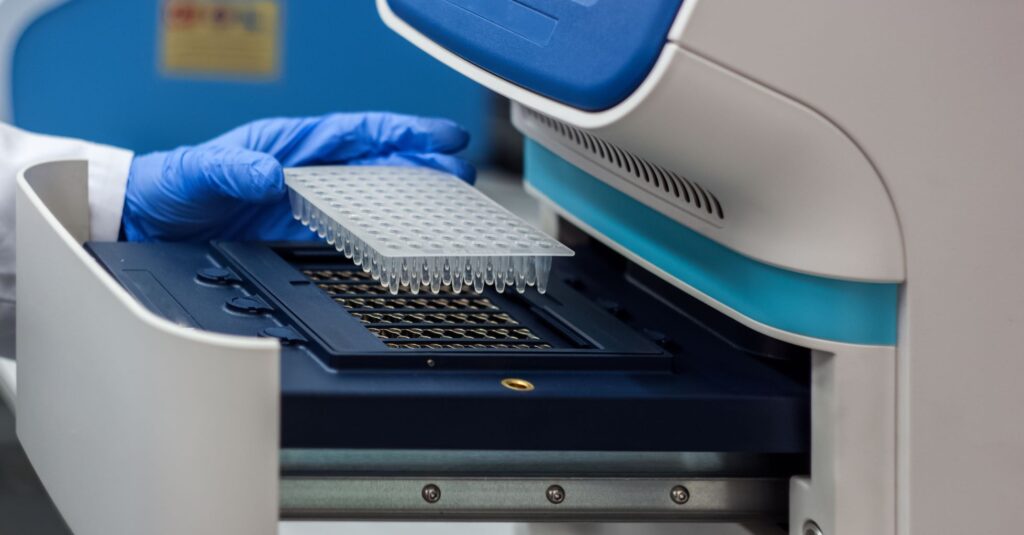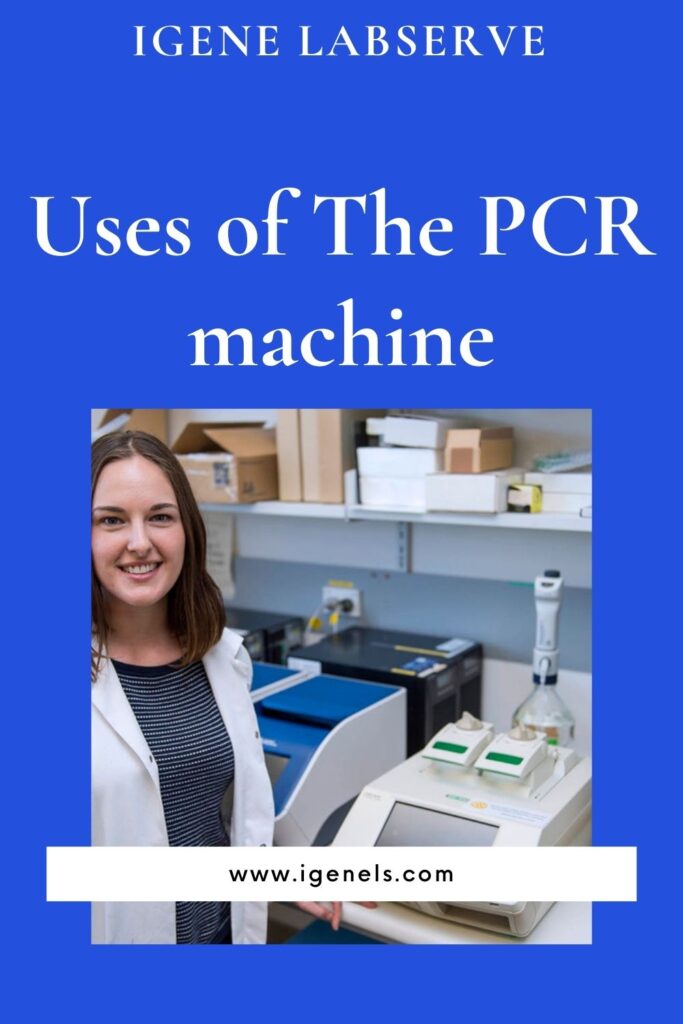The PCR Machine promotes polymerase chain reaction (PCR) allowing vitro amplification of DNA fragments as fast cloning, DNA sample modification, detecting pathogenic microorganisms and accurate genotyping, detection of mutation, malignancy transformation or tissue typing, analysis of the archaeological specimen, forensic applications, paternity testing, mapping hereditary traits, and investigating gene expression.
The importance of PCR
The polymerase chain reaction (PCR) is based on the study followed up to 1985, of examining genes by cloning them. The PCR synthesizes a million copies of a specific DNA. This non-radioactive probe was reserved for research applications and has emerged as a powerful tool in molecular diagnosis laboratories. The machine is based on Taq DNA polymerase. Polymerizing deoxynucleotide precursors (dNTP) in the temperature range 75-80 degrees C through repetitive thermic cycles of DNA template denaturation, annealing of oligonucleotide primer, and annealed primers through DNA polymerase.
Three-step analysis
The exponential accumulation involves a three-step process, where specific fragment termini are defined by 5’end of the primers. The estimation of amplification is done in 2n where n is the number of cycles. In the first step, denaturation of double standard target DNA is achieved by heating the sample at 90-95 degrees. The second step involves lowering the temperature to about 5 degrees C below the melting point of the primer; this ensures the specificity of the primer annealing leading to product specificity. In the third step, the sample temperature is increased to 70-73 degrees C. The primers are used based on the known DNA sequence and should flank the targeted DNA sequences.
How is the PCR used for Environmental Microbiology?
Detection of microorganisms in the environment targeting specific species for identification and quantification, even when they exist in low quantities such as searching pathogens or species that indicate environmental status. A common example is coliforms in water.
Consumer genomics
Enabling personalized genome testing offering information on genome sequencing, this analysis helps people affected by a specific condition such as nutrigenomics, providing information on food that might deteriorate the condition of an individual suffering from inflammatory bowel disease.
Forensic science
Collecting organic crime scene evidence like blood samples, hair pollen, semen, and soil. DNA samples of fingerprints, identifying familial relationships, The test allows genomic DNA isolation from tiny samples like a single molecule amplification, molecular diagnostics, and biochemical analyses.
Medicine
With the help of PCR, you can diagnose diseases and treat many ailments.
Phylogenetics
Scientists have a better insight into analyzing evolution and human development through the amplification of DNA from hair, bone, and other tissues using PCR. DNA can be identified, analyzed, with genome sequencing enabling knowledge of paleontology and a wider sense of organism evolution and relationship with each other, supporting conservation effort by observing this evolution and getting a clearer perspective to adaptation.
Food and agriculture
PCR machines are used for modifying existing organisms for improving food quality and production the deliberate alteration of the genetic code through genetic manipulation is now more targeted with new crops yielding quicker production.
Types of PCR
In different scientific applications, different PCR methods are applied using the same basic PCR with different product analyses.
The End Point PCR
This PCR determines the end product of RCT temperature cycling visualized on a diagnostic agarose gel confirming the product presence size and relative quantity. This PCR is used for molecular cloning, genotyping, and sequencing. Though useful, it does not quantify the methods that other PCRs do. Though the amplification doubles at every reaction cycle but dNTPs and other reagents run low during the final cycles leading to slower amplification, the PCR reaction too may not be 100% accurate. However, this PCR is extremely useful for different molecular biology techniques and experiments. Amplifying specific DNA is ideally used for detecting an insert or DNA piece in a sample such as a colony PCR or for detecting mutated sequences.
Quantitative polymerase chain reaction, qPCR
The real-time PCR is also known as a quantitative polymerase chain reaction, qPCR measuring starting DNA concentration. With the addition of probe-based fluorescent dye intercalating with dsDNA, the fluorescent output is measured using a fluorometer feature built into the thermocycler. The fluorescent signal appears where there is a DNA concentration during the PCR reaction cycles. As the products appear in each cycle, the signals increase proportionately.
Digital droplet PCR, ddPCR
This PCR provides ultrasensitive and absolute nucleotide concentrations. This quantifies rare DNA sequences using water-oil emulsion droplet technology which fractions the sample into approximately 20,000 droplets with each droplet amplified. This enables the analysis of each droplet through a droplet reader measuring the fluorescence amplitude of each droplet.
Multiplex PCR
Multiple targets are amplified in a single OCR experiment with multiple primers in one reaction saving time and effort. These are further divided into Single template PCR reactions where one template is amplified using several forward and reverse primer sets. The other is multiple templates PCR where multiple templates with different primer pairs align a target region. This is used for disease or pathogen identification.
Conclusion
With the importance of PCR tests for various requirements, you need a standard PCR machine for the best outcome of your experiments. Connect with igene Labserve, https://www.igenels.com/ to purchase the most advanced PCRs for successful outcomes and tests.



Pingback: This is What You Need to Know about DNA Fingerprinting and PCR Machine – iGene Labserve